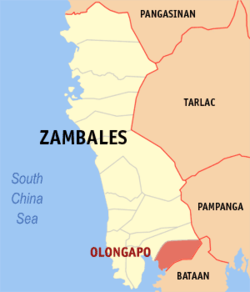
History
Olongpo was first inhabited by the Aetas before it was discovered by the Spaniards. It was then a small fishing village of Subic with the majority of the people getting their livelihood through it. When the Spaniards came and conquered the town on 1884, they made it as their navy settlement. King Alfonso II declared Subic Bay as Spain’s stronghold in the Far East because of its notable deep water harbor and the protection provided by the mountains surrounding the place against strong winds.
After 14 years of Spanish-American War, Admiral George Dewey took Olongapo and Subic Bay, making the bay area and the whole Olongapo as U.S. Military reservation. Millions of dollar was spent converting the base. Estimated cost spent was $170 million. But after 8 years, the Filipino citizens demanded that Olongapo be returned to the governance of the Philippines. Thus in December 7, 1959 Olongapo was turned over to the Philippine government and changed into a municipality by virtue of Executive Order No. 366 by issuance of President Carlos P. Garcia.
Seven years later, President Ferdinand E. Marcos signed Republic Act No. 4645 on June 1, 1966 making Olongapo as a chartered city. In 1983, Olongapo City became the highly urbanized city in Central Luzon.
On June 15, 1991, Mount Pinatubo erupted causing extensive damage at the U.S. Facility and in Olongapo City. It was also noted that in this year, the Senate of the Philippines rejected the Treaty agreement between the Republic of the Philippines and the United States of America.
A year later, President Corazon Aquino signed R.A. 7227 creating Subic Bay Metropolitan Authority and appointed Mayor Richard J. Gordon as Chairman and Chief Executive Officer.
On November 24, 1992, the U.S. Naval Facility was turned over to the Philippine Government, and Subic was turned over to the governance of Subic Bay Metropolitan Authority (SBMA).
Population/ Language/ Area
The city recorded a total population of 221,178 as of 2010. As an urbanized city, various languages are spoken in the area ranging from Tagalog, Pampango, Ilocano, and Zambal. Others speak in the dialects of Waray, Visaya, Cebuano, Pangasinan, Bicolano, Ilonggo, among others. The city is represented by various ethnic groups.
Olongapo city’s land area is mountainous, thus urban development can be quite expensive. The total built up area is about 2,600 hectares or 14.05% only of the total land area which is 18,500 hectares. The city is bounded on the north by the town of Subic, Zambales, on the east by Bataan province, and on the south by Subic Bay Freeport Zone, and on the west by Subic Bay. It has a total land area of 185 square kilometers.
Products and Services
There are four leading investment areas in Subic Bay Freeport Zone, these are the Central Business District, Subic Gateway, Subic Bay Industrial Park, and Subic Techno Park. Manufacturing, electronic communications technology businesses are also present in this place. The city also has warehousing, trans-shipment, banking firms and education facilities that yield assets and generate thousands of jobs.
Business Opportunity
Considering the continued development of the Subic Bay Freeport especially with the completion of the Subic-Clark-Tarlac Expressway, there is no doubt that Olongapo City offers a lot of opportunities for entrepreneurs. Two areas of investment can be the priority namely: tourism and real estate. Hotels, resorts, commercial and residential buildings would be in great demand as more and more tourists and businessmen descend on the freeport. For small and medium enterprises, the production of items needed by the visitors are encouraged. Jewelry, garments, fashion accessories, furniture and fixtures, souvenir items, and giftwares are some businesses to be engaged in.
Tourist Spots
- Olongapo City Museum – this museum contains dioramas, artifacts, and paintings about te history of the city. At the entrance, a rotating Ulo ng Apo statue meets the visitors.
- Marikit Park – One of the earliest parks of Olongapo, it has become famous in its time. Today, it is near Gordon College, the museum, the convention center and the library.
- Olongapo Lighthouse – this is a panoramic view perfect for picture taking. This old lighthouse is located along the national highway going to the north. It overlooks the Subic Bay Freeport area.
Festivals and Celebrations
- Dinamulag Mango Festival – is celebrated for the specific mango variety in the city. It is thought by some that this mango is one of the sweetest. This festival is celebrated every April.
- Sibit-Sibit Festival – is a word derived from the word that means a small paddle boat used for fishing as Olongapo was ultimately born from being one of the ancient fishing villages of the country. Sibit-Sibit festival is an annual event held in the city to interpret the rich and colorful history of the it. There are lots of activities int his festival such as aqua sports activities, club activities, entertainment sprees and talents showdowns. Aqua sports ativities are the banca races: single rowing, double rowing, motorized banca race and motorized exhibition game.

